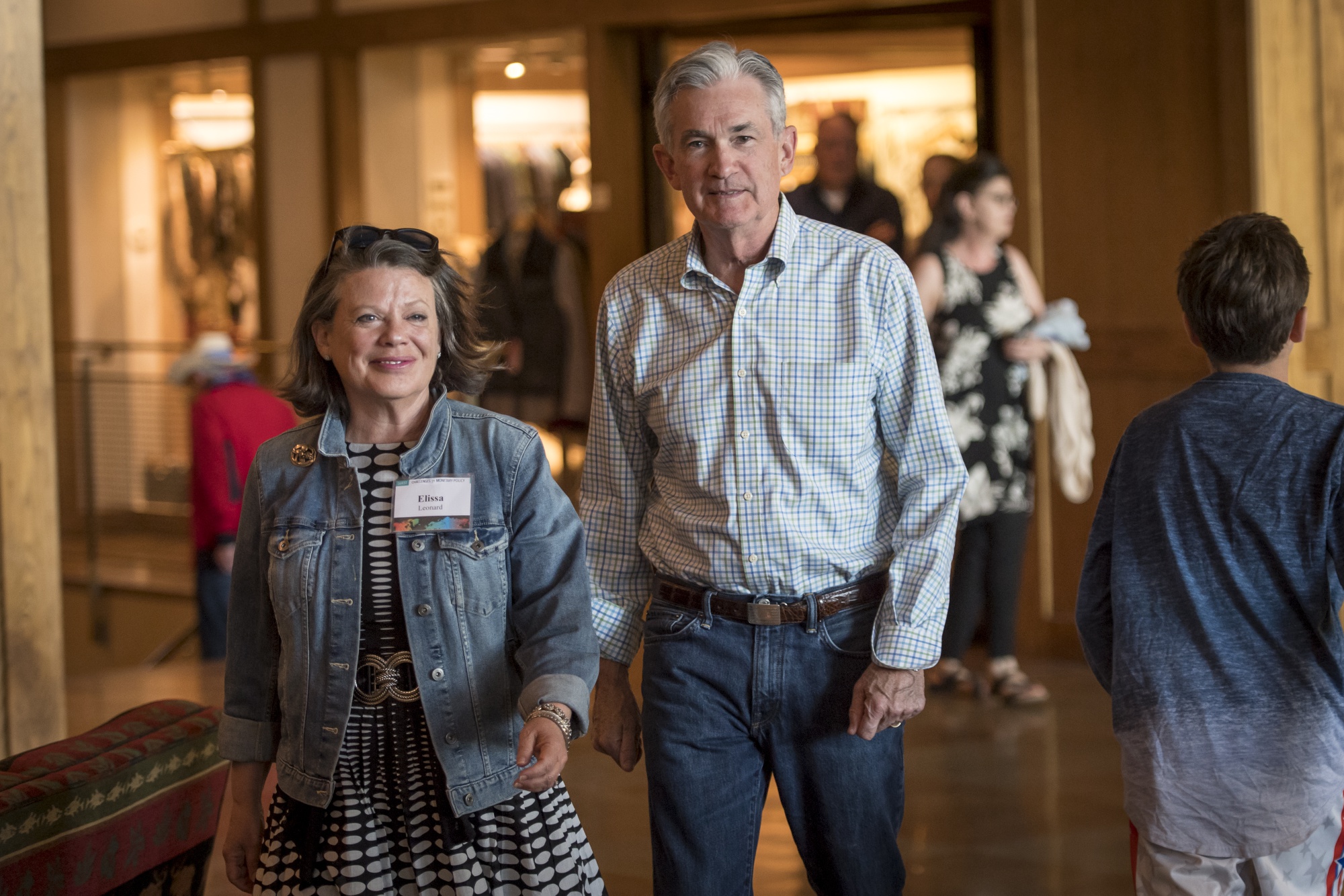Tariffs And The Fed: Powell's Concerns About Economic Stability

Table of Contents
The Fed's Mandate and Economic Stability
The Federal Reserve operates under a dual mandate: maintaining price stability and promoting maximum employment. These two objectives are often intertwined, and disruptions to one can significantly impact the other. Tariffs, unfortunately, present a direct challenge to both aspects of this mandate. They create a ripple effect throughout the economy, impacting businesses, consumers, and the overall health of the financial system.
-
Inflationary Pressures: Tariffs increase the cost of imported goods, directly contributing to inflationary pressures. When businesses face higher input costs, they often pass these increased expenses onto consumers through higher prices, leading to a rise in the consumer price index (CPI). This can erode purchasing power and necessitate the Fed to potentially increase interest rates to combat inflation.
-
Job Losses: Retaliatory tariffs imposed by other countries can lead to significant job losses in export-oriented sectors. Businesses facing reduced demand for their products may be forced to lay off workers, impacting employment levels and potentially triggering a domino effect on related industries.
-
Uncertainty and Investment: Unpredictable tariff policies create significant uncertainty for businesses, making them hesitant to invest in expansion, new technologies, or hiring. This uncertainty undermines economic growth and can lead to a prolonged period of stagnation.
-
Limited Fed Countermeasures: The Fed's tools are primarily focused on monetary policy – adjusting interest rates and managing the money supply. While the Fed can attempt to mitigate the effects of tariffs through monetary policy adjustments, its ability to directly counteract the economic damage caused by tariffs is limited. The Fed can't eliminate the underlying source of the problem.
Powell's Public Statements on Tariffs
Jerome Powell has consistently expressed concerns about the economic implications of tariffs in numerous public appearances. His statements often reflect a cautious and concerned tone, highlighting the uncertainty introduced by unpredictable trade policies.
-
Specific Examples: Powell's speeches, press conferences, and congressional testimony frequently mention the negative economic effects of tariffs. He has often warned about the potential for reduced investment, slower economic growth, and increased inflation.
-
Key Concerns: A recurring theme in Powell's statements is the uncertainty surrounding tariffs and their detrimental impact on business investment. This uncertainty makes it difficult for businesses to plan for the future and can lead to a decline in overall economic activity.
-
Market Sentiment: Powell's public comments on tariffs significantly influence market sentiment and investor confidence. Statements expressing concern about the economic consequences of tariffs can lead to increased market volatility and reduced investor enthusiasm.
The Impact of Tariffs on Inflation and Employment
Tariffs directly contribute to inflation through increased input costs for businesses. When the price of imported raw materials, intermediate goods, or components increases, businesses either absorb these higher costs, reducing their profit margins, or pass them on to consumers through higher prices.
-
Industries Impacted: Sectors like agriculture and manufacturing have been particularly hard hit by tariffs and retaliatory measures. Farmers facing reduced exports have experienced significant financial difficulties, and manufacturers have seen increased production costs, impacting their competitiveness in the global market.
-
Ripple Effects: Job losses in specific sectors due to tariffs have ripple effects on consumer spending and overall economic growth. When workers lose their jobs, their spending power decreases, further impacting businesses and potentially triggering a recessionary spiral.
-
Regional Disparities: The economic impact of tariffs is not uniform across all regions. Areas with a high concentration of industries heavily reliant on international trade are particularly vulnerable to the negative consequences of tariffs, exacerbating regional economic inequalities.
The Fed's Response to Tariff-Induced Economic Uncertainty
The Fed’s response to tariff-induced economic uncertainty involves navigating a complex path. It must balance the need to control inflation with the desire to support employment growth. However, the Fed's tools are limited in their ability to directly address the root cause of the problem – the tariffs themselves.
-
Interest Rate Adjustments: The Fed might adjust interest rates in response to tariff-related economic challenges. If inflation rises significantly due to tariffs, the Fed might increase interest rates to cool down the economy. Conversely, if employment suffers significantly, it might lower rates to stimulate growth.
-
Unconventional Monetary Policy: In extreme cases, the Fed may resort to unconventional monetary policy tools, such as quantitative easing (QE), to increase liquidity in the financial system and boost economic activity. However, the effectiveness of such measures in mitigating the effects of tariffs is debatable.
-
Balancing Act: The Fed faces a considerable challenge in balancing inflation control with employment goals in the face of tariffs. The trade-off between these two mandates becomes increasingly difficult when external factors like tariffs significantly disrupt the economic equilibrium.
Conclusion
The relationship between tariffs and the Fed is complex and profoundly impacts economic stability. Jerome Powell's consistent expression of concern highlights the significant challenges posed by unpredictable trade policies to the Fed's dual mandate. Tariffs contribute to inflation, job losses, and economic uncertainty, limiting the effectiveness of traditional monetary policy tools. Understanding this interconnectedness is crucial for navigating the current economic landscape. To stay informed on this critical issue, we urge you to continue researching the ongoing dialogue surrounding tariffs and the Fed, exploring resources that delve into the implications for economic stability and the future of global trade.

Featured Posts
-
 Best Shrimp Dishes 5 Hudson Valley Gems
May 26, 2025
Best Shrimp Dishes 5 Hudson Valley Gems
May 26, 2025 -
 Euroleague I Niki Tis Monako Epireazei Ti Vathmologia
May 26, 2025
Euroleague I Niki Tis Monako Epireazei Ti Vathmologia
May 26, 2025 -
 Ex Israeli Soldiers Plea Free Gaza Captives
May 26, 2025
Ex Israeli Soldiers Plea Free Gaza Captives
May 26, 2025 -
 Moto Gp Argentina 2025 Di Trans7 Jadwal Tayang Lengkap And Info Terbaru
May 26, 2025
Moto Gp Argentina 2025 Di Trans7 Jadwal Tayang Lengkap And Info Terbaru
May 26, 2025 -
 Southern Vacation Hot Spot Rebuts False Claims Following Shooting Incident
May 26, 2025
Southern Vacation Hot Spot Rebuts False Claims Following Shooting Incident
May 26, 2025
